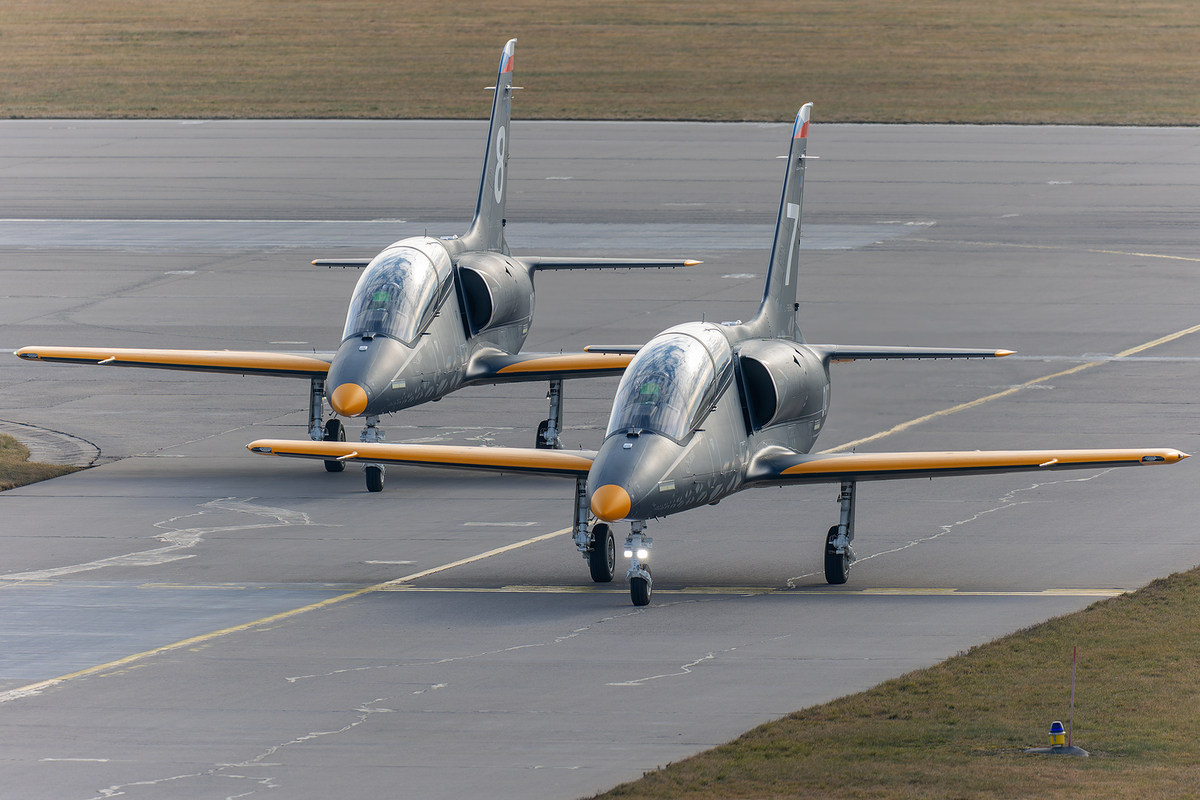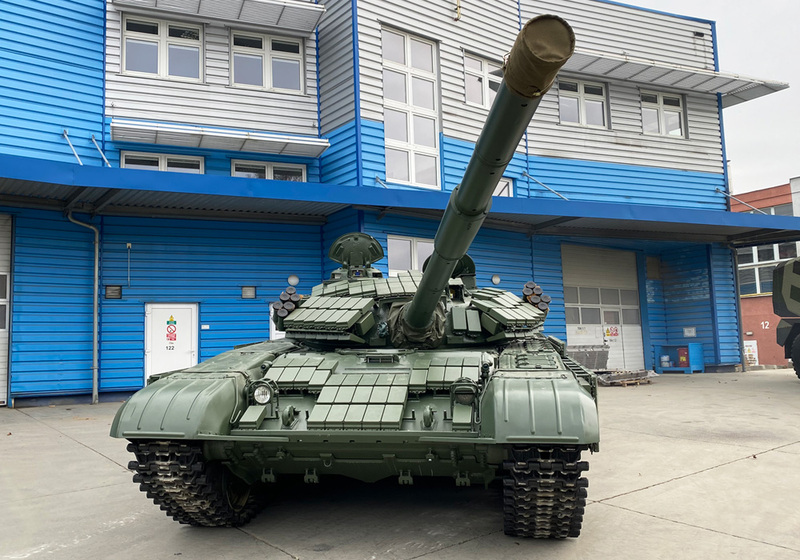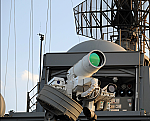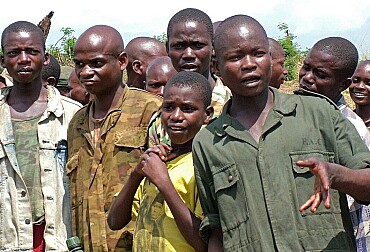The dynamic Middle East and North Africa from a defence industry perspective
The Czech Republic annually exports military equipment valued at around CZK 24 billion to the Middle East and North Africa. The latest figures from the Swedish think tank SIPRI on arms trade show that in the last five years, the Middle East accounted for a quarter of global imports of military equipment. North Africa accounts for approximately two percent. Through bilateral defence cooperation with countries in the region, the Czech Republic contributes to the achievement of its own and allied foreign policy objectives.
The Middle East and North Africa are linked geographically, historically and militarily. They are also often affected by the same regional conflicts and security dynamics. For this reason, the two regions are often considered as a single entity (MENA - Middle East and North Africa). The Middle East's share of global arms imports grew by 61% between 2005-2009, before declining by 20% between 2015-2019 and 2020-2024 for various reasons, according to the SIPRI think tank. However, given the volume of expected shipments, it will almost certainly remain a significant importer of military equipment. North Africa's share of global arms imports is much smaller, falling by 62% between 2015-2019 and 2020-2024 due to declining imports from Algeria and Morocco.
Four of the world's top ten arms importers in the last five years are located in the MENA region: Qatar (third), Saudi Arabia (fourth), Egypt (eighth) and Kuwait (tenth). Military aircraft (43% of total imports between 2020 and 2024), naval vessels (20%) and missiles (16%) are the most in demand in the region. Long-range strike capabilities of combat aircraft are in high demand among local countries, as in other parts of the world. However, there is also growing concern in the region about maritime security, reflected in the acquisition of frigates by Egypt, Israel and Qatar, while the purchase of significant amounts of ammunition for air defence reflects increasing concerns over airspace security.
Within the Middle East, the Gulf Cooperation Council, whose members accounted for 20 per cent of global arms imports between 2020 and 2024, can be singled out separately. Although Qatar is the second smallest member state, it was the largest arms importer in the Middle East in 2020-2024 with a 23% share. Qatar's large-scale arms build-up is taking place against a backdrop of growing regional insecurity and tensions with its neighbours, which culminated in the Saudi-initiated blockade of the country in 2017-2021.
Saudi Arabia is close behind Qatar in terms of the value of imported military equipment, despite a 41% decrease in its imports between the periods 2015–2019 and 2020–2024. From its position as the world's largest arms importer between 2015-2019, Riyadh dropped to fourth place between 2020-2024. SIPRI attributes this downward trend to the cyclical nature of arms procurement: once systems enter service, they are used for some time before orders are placed and eventually replacements are delivered. This can cause temporary disruptions in arms supply. Saudi Arabia is also investing in its own arms industry as part of its vision for 2030 (Saudi Vision 2030). However, it is unlikely to end its dependence on imports in the foreseeable future.
Arms imports by the other two Gulf states have risen sharply between 2015-2019 and 2020-2024: Kuwait (+466%) and Bahrain (+898%), making Kuwait the 10th and Bahrain the 23rd largest arms importers globally. Bahrain's security considerations are linked to regional tensions, particularly with regard to Iran, as well as internal tensions. The U.S. views its relationship with Bahrain as a means to enhance its power and stability in the Gulf region, and in 2017 the two countries extended a defense cooperation agreement, first signed in 1991, for another 15 years.
Although the United Arab Emirates (UAE) is the world's eleventh-largest arms importer, it has seen a 19% decline in arms imports between 2020 and 2024 compared to 2015-2019. This was likely due to the withdrawal from the war in Yemen, although Abu Dhabi continues to indirectly support its allies in the country (as in Libya, Somalia and Sudan). As SIPRI notes, it uses "a multi-layered network of violent non-state actors, financiers, businessmen, political leaders and influential figures to establish beachheads in countries of strategic value to Emirati national interests".
Outside the Persian Gulf region, Israel (ranked 15th globally) is also a major arms importer in the Middle East. Between 2015-2019 and 2020-2024, arms imports to the Jewish state remained stable and largely dependent on US military aid. The post-7 October 2023 Gaza war and subsequent military actions in Iran, Yemen, Lebanon and Syria stimulate Israeli demand for armoured vehicles, missiles, guided bombs and military aircraft.
Egypt is also usually included among the Middle Eastern states, although geographically (apart from the Sinai Peninsula) it belongs more to the North African region. Between 2015-2019 and 2020-2024, Cairo reduced its military imports by 44%, and instead of ranking third among the world's largest arms importers, it ranked eighth. Between 2015-2019, more than half of Egypt's arms imports were aircraft, mainly Russian and French fighter aircraft and Russian attack helicopters. In 2020-2024, ships, including large warships from France, Italy and Germany, accounted for nearly two-thirds. Egypt's most significant imports in the past decade reflect a focus on strengthening strike and long-range maritime capabilities. This has occurred in the context of tensions and disputes in the eastern Mediterranean, the war in neighbouring Sudan, strained relations with Israel and involvement in the war in Libya.
Apart from Egypt, Algeria and Morocco are among the largest arms importers in North Africa. There are long-standing tensions between the two neighbours linked to the conflict over Western Sahara. Algeria was the 21st largest arms importer in the world between 2020 and 2024, with imports falling by 73% compared to the 2015-2019 period. SIPRI links this trend, similar to Saudi Arabia, to the cyclical nature of arms procurement. Between 2020 and 2024, Russia accounted for almost half (48%) of Algeria's arms imports, followed by China (19%) and Germany (14%). Russian military exports to Algeria decreased by 81% compared to the 2015-2019 period. The most important imports in the last five years were armoured vehicles (33%), aircraft (29%) and ships (21%). Morocco imports considerably fewer weapons (armoured vehicles, missiles, aircraft) in 2020-2024, mostly from the US (64%), followed by France (15%) and Israel (11%). Half of the missiles shipped were from Israel, while of the 55 aircraft delivered, Rabat received 19 unmanned armed vehicles from Turkey.
The Swedish think tank does not mention any other countries because they have not made any major military equipment purchases in recent years. However, Iraq may become an important customer for the Czech Republic. AERO Vodochody sold twelve L-159 trainers to Baghdad in 2014 and at least some of them will be upgraded in 2022 under an after-sales support contract. The Iraqis use L-159s not only for training but also for attacks on Islamic State positions. The ongoing terrorist threat in the Middle East therefore represents an opportunity for the Czech defence industry, which AERO Vodochody is trying to exploit by offering L-39NG (Skyfox) aircraft to the Iraqi Air Force.

In the Middle East region, however, Prague's priority is to maintain its strategic partnership with Israel. "Israel is our closest partner in the Middle East," Minister of Defence of the Czech Republic Jana Černochová emphasised during her recent visit to the Jewish state. After the terrorist attacks on 7 October 2023, the Czech Republic is firmly on Israel's side and is willing to provide it with weapons, protective equipment and ammunition. In addition, the two countries are cooperating on many armament projects (especially the Czech acquisition of EL/M-2084/MADR 3D radars and SPYDER anti-aircraft systems). According to the Ministry of Defence, the project of the Israeli company ELBIT with the Prague-based company LPP to build a centre for the production of unmanned aerial vehicles on Czech territory also has great potential. "The excellent political relations between the two countries make it easier to strengthen business cooperation, and the combination of Israel's most advanced technologies and business capabilities with the Czech engineering tradition and strategic location in the heart of Europe can bring excellent results for both sides and not only in the defence industry," said Černochová.
Military cooperation between the Czech Republic and the MENA region is also affected by the Ukrainian-Russian war. For example, the Czech company Excalibur Army (part of the Czechoslovak Group) has upgraded several dozen T-72B tanks of the Moroccan army, which were heading to Ukraine in early 2023. Morocco acquired hundreds of T-72 tanks (148 T-72s, 136 T-72Bs and 12 T-72BKs) in 1999-2000 from Belarusian warehouses to create a 'Russian' armoured brigade in the north to defend against a hypothetical Algerian invasion.

The success of the Czech defence industry in the Middle East and North Africa will be determined by regional and global geopolitical developments. The security and political stability of the states there are certainly important in Prague's interests, and Prague can contribute to this by supplying weapons to fight terrorism. A certain risk in this respect is posed by respect for human rights and the state of democracy in the target countries, which may motivate the Czech authorities to refuse to export military equipment. However, Czech-Israeli relations will almost certainly remain strong, as evidenced by the Jewish state's dominant position among regional importers of Czech arms (worth some CZK 837 million in 2023). Prague will also seek to import ammunition or weapons from the MENA region (as in the case of Moroccan T-72 tanks) if this will help Ukraine defend itself against an aggressive Russian incursion.










